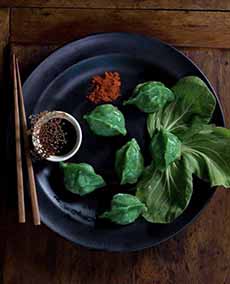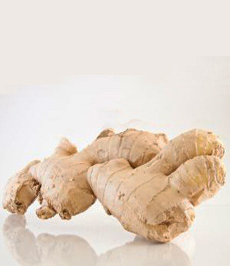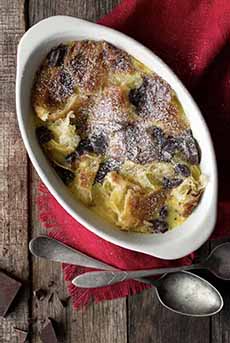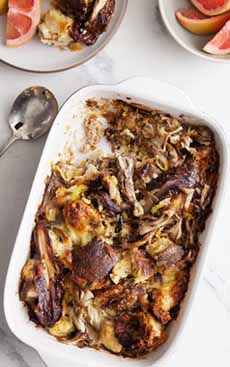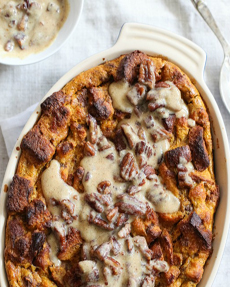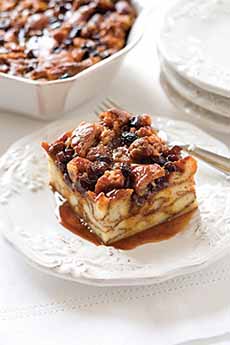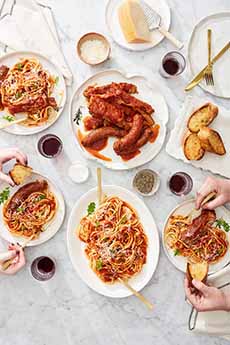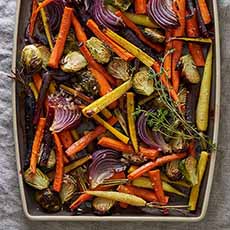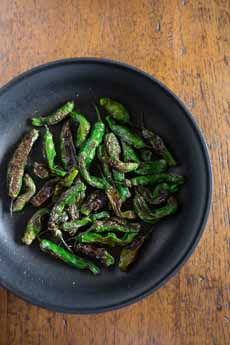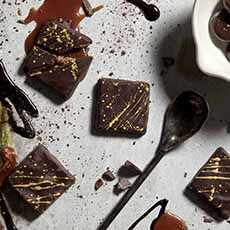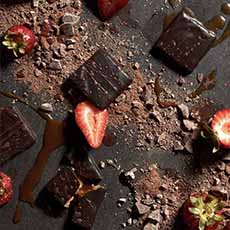|
When there’s a chill in the air, it’s time to make fondue or raclette.
Most Americans are familiar with fondue; less so with raclette (rah-CLET—photo #1).
Raclette is a melted cheese dish that’s easier to eat than fondue: no bread or veggies to get dropped and lost in the pot.
Raclette is a specific type of mountain cheese from the western Alps, where the mountains are the border between Switzerland and France.
In the taxonomy of cheese (categorization), it is technically a Swiss cheese.
But it is named after the French word racler, which means “to scrape.”
Raclette is warmed to melt it. In a restaurant, it is melted with a special heat lamp that holds a portion of the wheel and melts the top.
The melted cheese is then scraped onto a plate of boiled or roasted potatoes, cornichons and more (see recipe below). root vegetables, and meats.
You may not be having a festive Halloween this year, but you can make an at-home halloween more festive with a raclette dinner.
The recipe is below.
Raclette is also a great dinner party or buffet idea for when parties resume.
THE HISTORY OF RACLETTE
Traditionally, Alpine cowherds up in the high mountain pastures with their flocks would lunch upon boiled potatoes and cornichons, covered with melted cheese
At that time, this local cheese was unnamed: the generic “cheese” was self-explanatory.
When they’d get ready to camp for the night, the herders would place the cheese next to the fire, letting the exposed paste* (the top surface with the rind removed) melt into bubbly gooiness.
They’d scrape the layer of bubbling cheese over some rustic bread, eat and repeat the process.
Along with the bread, they might have brought boiled potatoes and cornichons.
The cheese subsequently was named raclette, for the way it was served.
When the melted-and-scraped cheese idea moved down the mountains into mainstream eating, additional foods appeared on the plate—all delicious when covered with melted cheese.
But then, what savory food is not delicious covered with melted cheese?
RECIPE: SWISS RACLETTE
Making raclette is as easy as melting the cheese.
While raclette-specific implements exist, you can melt it in a fondue pot or saucepan. The difference is that you’d pour the melted cheese onto the plate, instead of scraping it from the wheel.
Pour or scrape, it tastes the same: delicious.
Serve it with white wine. We nominate Gewürtztraminer, Gruner Veltliner or Riesling, although your favorite white wine is fine.
Classic Ingredients
Raclette cheese
Cornichons
Boiled Potatoes
Crusty bread, sliced
Speck
Optional
Additional charcuterie: prosciutto/serrano, salume, sausage
Cherry tomatoes
Cold roasted meats: beef, lamb, pork, poultry
Dried apricots
Picked onions and other pickled vegetables
Root vegetables, roasted or steamed
RACLETTE EQUIPMENT
You don’t need to fasten a wheel of raclette into an industrial raclette machine, just to serve this charming melted cheese dish.
The mini raclette machine in photo #3 will do. But at $320, it may be a bit steep (not to mention overkill) for most of us.
For a budget solution, a $30 Partyclette works (photo #5).
Both are completely portable and very easy to use.
But remember, your fondue pot or a saucepan work just fine.
Happy melting!
> THE HISTORY OF RACLETTE
> CHECK OUT THE DIFFERENT TYPES OF CHEESES IN OUR CHEESE GLOSSARY
|
|
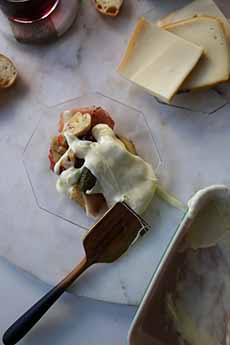
[1] Melted raclette cheese is scraped atop meats, pickles and vegetables (all photos © Murray’s Cheese).

[2] Raclette is a semi-soft cow’s milk cheese that is washed with brine. The washed rind gives the cheese a bit of a “stinky” aroma, but the cheese is creamy and nutty, somewhat like Gruyère.
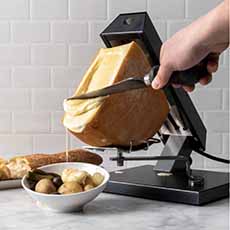
[3] Restaurants and home raclette lovers with a few hundred dollars can buy this special machine that melts the top of the wedge of raclette, that is then scraped onto the plate of food.

[4] Scraping the wheel.

[5] An inexpensive solution: the Boska Partyclette.
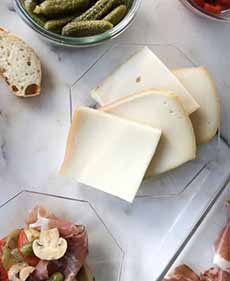
[6] You can buy slices of raclette for a sandwich, just as with other semisoft cheeses.
|







